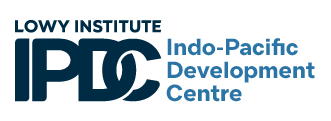A major issue that undoubtedly will be a point of contention at this year’s COP28 climate conference in Dubai in December, is the architecture of a fund meant to pay for loss and damage caused by the impacts of climate change.
The fund was hard fought for and its battle began before the inception of the United Nations Framework Convention on Climate Change (UNFCCC) in 1991 when it was already clear that sea level rise would inundate some low-lying atolls. Yet this request did not fly with developed countries who were supposed to foot the bill based on their historical emissions. Loss and damage only made its comeback into the Paris Agreement in 2015. It was finally recognised, but not without limitation: any rights to compensation were vehemently rejected by developed countries fearing legal consequences of liability. Generic finance, unrelated to compensation, to “address” loss and damage did not fall under this caveat.
For this year’s climate change negotiations, a transitional committee has been tasked with crafting the architecture. A separate fund for loss and damage seemed inevitable and was necessary to recognise that the consequences of climate change are caused by major polluting countries. It will also ensure that funds are truly new and additional and dedicated to addressing loss and damage. The monetary squeeze might be felt elsewhere though, potentially in reduced pledges to the Green Climate Fund, the largest fund solely dedicated to climate change action.
Now, a mammoth task lies ahead. Meetings of the transitional committee throughout the year have been civil and constructive. But this might change at COP28 when more is at stake and questions of compensation and justice are likely to be back on the table.

Many questions remain unanswered.
First, how should funds be mobilised? Various suggestions are being considered by the transitional committee such as debt relief, bonds and tax schemes. But in the context of loss and damage, these solutions are not easily developed, let alone implemented.
Second, who is eligible?
For many parties, having China or other major and emerging polluters eligible for funds is a deal breaker. A majority agree that the “most vulnerable” should have priority, which would give favour to small island states and some African nations. However, excluding parties that still enjoy developing country status – despite growing economies and increasing pollution – could prompt boycotts as they might feel equally entitled.
Third, how should funds be distributed and spent?
In view of the fragmented international climate finance landscape presented in the World Bank’s (R)evolution Roadmap, the transitional committee has an opportunity to set the standard for a fit-for-purpose fund architecture. If not, the committee risks designing another fund with innovative ways to mobilise finance, yet outdated ways of distributing the money and implementing projects.
Finally, how much should countries get when only a portion of the loss and damage can be directly linked to climate change?
The debate over attribution and hence developed countries’ liability and responsibility for all loss and damage has frequently arisen with critics pointing to the fact that events such as floods, tropical cyclones and rising sea levels have “always” occurred.
The road to designing a successful fund is bumpy, to say the least. But what could the architecture look like? Maybe it is worth turning to Europe. A successful model is the European Solidarity Fund. The fund is based on the principle of recognising hardship and helping one another without the legal implications of compensation. While not without its flaws, this model offers a potential solution to several hurdles the transitional committee must overcome. The question of attribution to climate change, for example, is addressed by not providing funds for the entire loss and damage caused. Projects are meant to be less donor controlled, with countries largely identifying needs by themselves, a crucial characteristic for a loss and damage fund.
The “how” of implementing projects is an equally important question. Increasingly, there is recognition that principles that are people-centred and empowering through fit-for-purpose and self-created projects are needed. It is imperative that such genuinely locally-led approaches are embedded in the new loss and damage fund’s architecture. This would ensure meaningful projects where they are needed most and avoids another fund with outdated methodologies.
A major challenge will be the inclusion of non-economic losses such as cultural heritage, lost lives and involuntary permanent displacement due to loss of land. In this context, questions around compensatory payments, justice and intergenerational equity will undisputedly again be raised at COP28. But how can issues like this possibly be addressed with financial payments?
The loss and damage fund might arguably be one of the least straightforward global finance mechanisms to set up, but that makes it uniquely positioned to “getting it right” – to be truly innovative and progressive. One can only hope that all members of the transitional committee embrace this opportunity.


